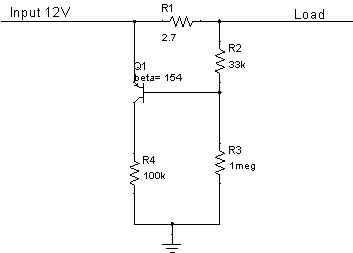T
treez
Guest
Hello,
Is the following PNP transistor going to overheat in this circuit (attached)?
The PNP transistor is put there so as to provide a low output on its collector if the load ever goes open.
However, the PNP is just a CPH3105 type, and is in a SOT23 package, and is on a minimal footprint on the PCB, with no cooling copper added to any of its pads.
This PNP is dissipating 175mW (Ieb * Veb)

CPH3105 PNP transistor datasheet:
https://www.onsemi.com/pub_link/Collateral/EN6084-D.PDF
Is the following PNP transistor going to overheat in this circuit (attached)?
The PNP transistor is put there so as to provide a low output on its collector if the load ever goes open.
However, the PNP is just a CPH3105 type, and is in a SOT23 package, and is on a minimal footprint on the PCB, with no cooling copper added to any of its pads.
This PNP is dissipating 175mW (Ieb * Veb)

CPH3105 PNP transistor datasheet:
https://www.onsemi.com/pub_link/Collateral/EN6084-D.PDF
Last edited by a moderator:
